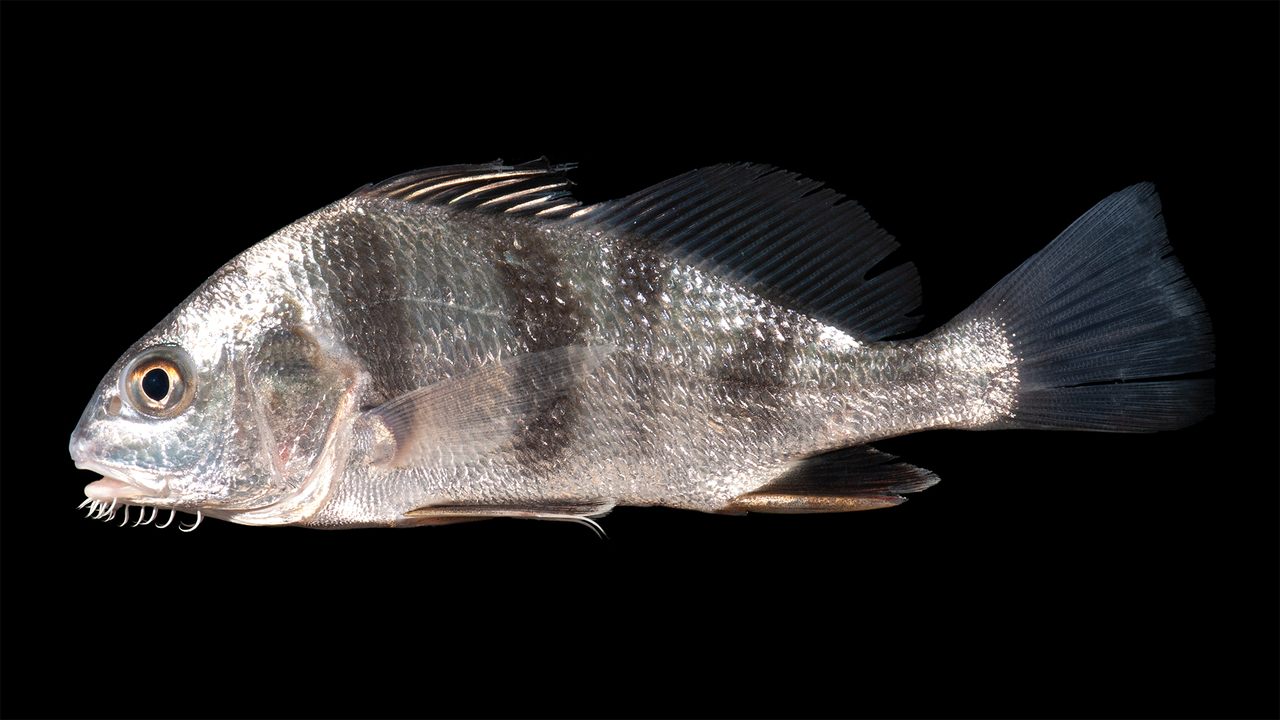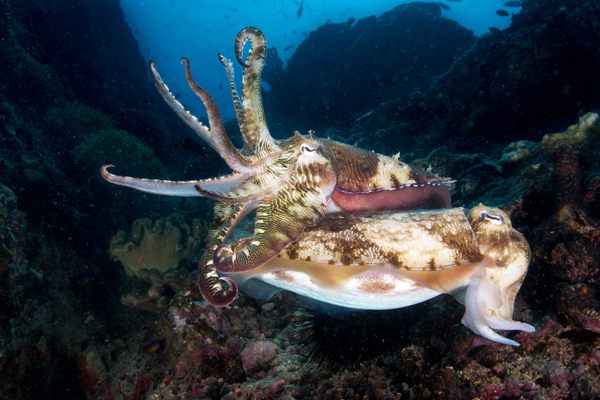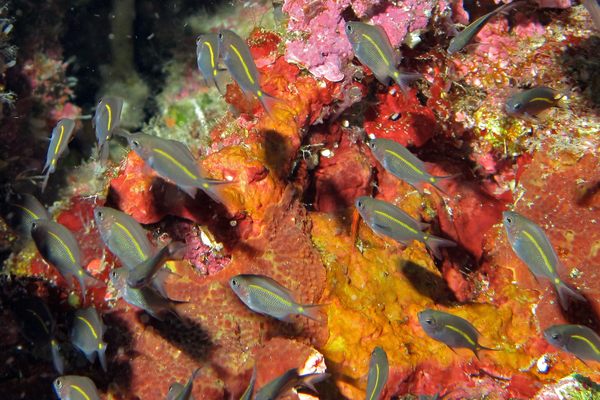Could Fish Sex Be Keeping Floridians Up at Night?
The mating calls of black drum fish might be the source of Tampa’s mysterious thumping bass.
Long after midnight on a foggy winter night at Oldsmar Pier in Tampa Bay, Florida, a group of friends stopped in their tracks as an eerie noise seemed to roll in off the ocean and reverberate around them.
“We literally questioned if it was aliens,” says Emelle Lee, one of the friends on the pier. “It was so loud that a few other people came out of their homes to check it out.” The group eventually wrote it off as some weird effect of the dense fog, perhaps distorting the sounds of passing ships or air traffic around the airport, just a few miles away.
For the past few winters, residents in the Tampa Bay area have been reporting similar experiences: an eerie thumping bass heard in homes up to a mile inland. While many people assumed it was a new nightclub or a noisy neighbor, fish acoustics expert James Locascio, who works at the MOTE Marine Laboratory and Aquarium in nearby Sarasota, has another idea. He believes it could be the epic mating calls of black drum fish.
“Everybody thought, ‘I have this jerk neighbor and I can’t find them,’” says South Tampa resident Sara Healy. “Who would think, ‘Oh, must be the fish.’ That’s ridiculous.” For Locascio, however, it wouldn’t be the first time.
In 2005, as part of his dissertation, Locascio helped communities in Punta Gorda and Cape Coral—about an hour’s drive south of Tampa—trace their own mystery noise back to the percussive sound that gives black drum fish their name. The species (Pogonias cromis) makes a bumping-bass beat by flexing muscles against its swim bladder during mass-spawning frenzies.
The loud, low-frequency sound waves can travel long distances, through the ground and potentially into people’s homes. Locascio compares it to being disturbed by the thudding of a cranked bass speaker in a passing car when you’re tucked in bed. “That’s kind of the experience people are having with this.”
Locascio isn’t sure whether the sound is a mating call or results from the act of mating, but he knows the noisy courting takes place on winter nights—an observation that coincides with locals’ reports of something going bump in the night.
In October 2022, complaints of a similar sound appeared in a Facebook group for South Tampa moms. Some members said the creepy noise woke their kids, who then couldn’t go back to sleep. The sheer mystery of its source was perturbing for everyone—local outlet Fox 13 News reported that it stumped even the police. Theories and suspicions popped up across the internet, ranging from souped-up car speakers to alleged activities at a nearby Air Force base. Over the years, reports have been concentrated in South Tampa but extend across Tampa Bay and even south to Sarasota—which makes sense, says Locascio, if black drum are the source. “Tampa Bay is a big place and fish move around,” he says.

On January 14, Healy—who is an administrator of the South Tampa moms’ Facebook group—finally heard the sound for herself, in her home, a mile from the water. “I stopped mid-stride and I looked at my husband and said ‘Do you hear that?’” says Healy. “I was really excited because I hadn’t heard it yet.”
The next day, more people reported hearing the sound, some claiming it was louder than ever, says Healy. Some members of the Facebook group even drove around trying, unsuccessfully, to track down the source. People were angry and confused, and Healy wanted answers. She did some digging and found year-old news stories quoting Locascio about black drum mating as the possible explanation. So Healy contacted him and they came up with a plan.
Healy crowdsourced funds to pay for underwater recorders, which, beginning this month, Locascio will deploy around the docks of homeowners also eager for answers. While Locascio says he’s confident that black drum fish are the sound’s source—rather than cruise ships or party boats—he can’t say for certain without hard data. “I’m a scientist,” he says. “We want to show the data, explain the data, and defend the data. We’re truth-seeking.”
Healy and Locascio hope the findings will be helpful for residents, even if there’s nothing to do about the noise. “You can’t get rid of the fish and you really shouldn’t want to,” says Locascio. “It’s just part of the natural environment that people can enjoy. People live here because they appreciate the weather, the water, and the wildlife.”
“I think the reason it bothers people is because it’s unknown, and it’s in their house at night, so it’s a bit spooky,” he says. “Taking the mystery out of it, or at least providing an explanation, can give peace of mind.”




























Follow us on Twitter to get the latest on the world's hidden wonders.
Like us on Facebook to get the latest on the world's hidden wonders.
Follow us on Twitter Like us on Facebook